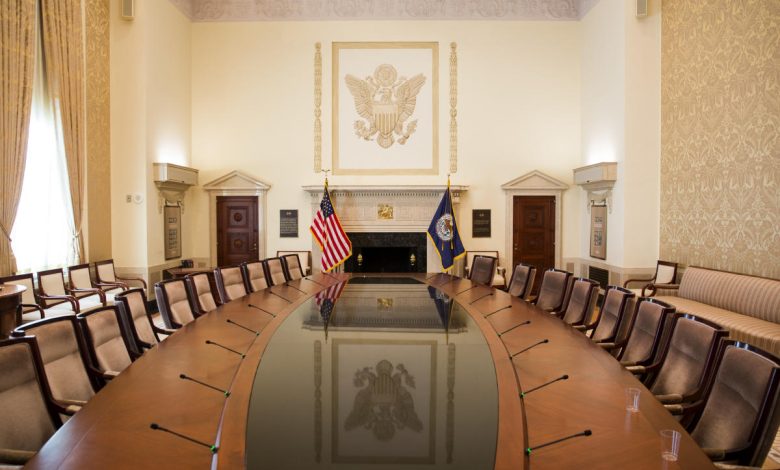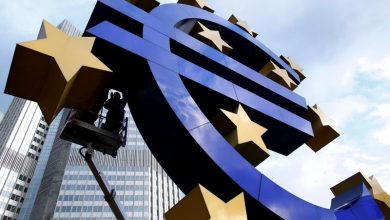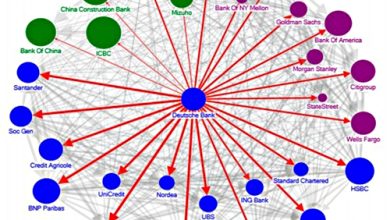New year, new look for the Federal Reserve

A new year means new beginnings — for the Federal Reserve too.
Alongside the normal rotation of voting members, the central bank is set to get some new faces when the Biden administration names its picks for three vacant seats on the Fed’s Board of Governors.
As inflationary fears prompt the Fed to reverse course on its pandemic-era easy money policies, the composition of the policy-setting Federal Open Market Committee will be significant for the pace of interest rate hikes next year.
The FOMC comprises 12 regional Federal Reserve bank presidents, plus the seven members of the Fed’s Board of Governors based in Washington, D.C.
[Read: What is the Federal Reserve?]
All 19 deliberate policies at the FOMC meetings, which happen eight times a year. But when policy actions are finally decided (i.e. raising/lowering interest rates, or the handling of asset purchases), only 12 of them vote: all seven board members, the head of the New York Fed, and four regional bank presidents.
Those four voting regional bank spots rotate on a yearly basis. In 2022, the heads of the Federal Reserve Banks of Boston, Cleveland, St. Louis, and Kansas City will have votes.
Not much is known of Boston Fed leader Kenneth Montgomery, who is holding the role on an interim basis after its former head stepped aside in the wake of a trading scandal that also engulfed the president of the Dallas Fed.
But commentary from the other three Federal Reserve Bank presidents suggests that the 2022 committee will have a more “hawkish” tilt — toward a more aggressive path of interest rate hikes north of the current setting of near zero.
-
Cleveland Fed President Loretta Mester: “I do think that we have to be in a position that if we need to raise rates a couple of times next year, we’re able to do that.” (Bloomberg interview, Dec. 1)
-
St. Louis Fed President James Bullard: “The FOMC at upcoming meetings may want to consider removing accommodation at a faster pace.” (Speech, Dec. 3)
-
Kansas City Fed President Esther George: “It is also clear that the risk of a prolonged period of elevated inflation has increased. The argument for patience in the face of these inflation pressures has diminished.” (Speech, Nov. 5)
Those Fed presidents are likely to be joined by Fed Governor Christopher Waller, who has similarly called for tighter policy as of late.
“This group represents an important block of five voters that could begin to dissent if the Fed is not raising rates by the summer of next year,” Deutsche Bank analysts wrote in a note.
Flock of doves?
The impact of those “hawks” may depend on who the Biden administration taps for three seats that will be open on the Fed Board by the end of January.
The Wall Street Journal reported Tuesday that the White House may bring back former Fed Governor Sarah Bloom Raskin, alongside Fed Governor appointments for Michigan State University Professor Lisa Cook and Davidson College Professor Philip Jefferson.
It is unclear how the three would sway on the pace of tightening policy. But Goldman Sachs Economics wrote that any new appointments for those Fed governor roles will likely have a “dovish tilt,” with new officials preferring to “tread more cautiously” through interest rate hikes.
Either way, the path of policy is likely to be charted by its leader: Jay Powell, who was tapped for a second term as Fed Chair by President Biden.
Powell has already directionally led the Fed to a tightening of policy. Whereas the central bank was absorbing trillions in U.S. Treasuries and agency-mortgage backed securities to reassure markets of its support, the Fed is now in the process of bringing those purchases to a full stop by roughly March.
The Fed has also already signaled a likelihood of raising short-term interest rates — the Fed’s primary monetary policy tool — by roughly 75 basis points throughout 2022.
“We’re in a position where we’re ending our taper by March, in two meetings, and we’ll be in a position to raise interest rates as and when we think it’s appropriate,” Powell said on Dec. 15.
The next FOMC meeting will take place Jan. 25 and 26. The Biden administration has yet to officially make nominations for the remaining Fed roles.
Brian Cheung is a reporter covering the Fed, economics, and banking for Yahoo Finance. You can follow him on Twitter @bcheungz.
Follow Yahoo Finance on Twitter, Facebook, Instagram, Flipboard, LinkedIn, YouTube, and reddit
Buka akaun dagangan patuh syariah anda di Weltrade.
Source link





